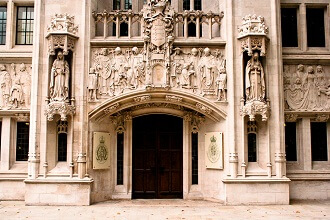Supreme Court Head Calls for More Diversity Amongst Judiciary
Supreme Court Head Calls for More Diversity Amongst Judiciary

The president of the Supreme Court has criticised a lack of diversity among the judiciary, stating that the public must feel those on the bench are genuinely “our judges” rather than “beings from another planet.”
In an interview to mark the centenary of the Sex Disqualification (Removal) Act – which removed barriers to women entering the legal profession – Lady Hale said that much still needs to be done to improve the diversity of judges in the UK’s highest court.
On the subject of gender equality, Lady Hale – who has been the first woman to serve in a number of prestigious positions throughout her career – urged for a more balanced ratio of female to male judges in higher courts and noted that women in the legal profession are increasingly aware and resistant of the gender pay gap.
2019 marks the tenth year of the Supreme Court, of which Lady Hale is the first female president. The Supreme Court president is now specifically calling for swifter progress in promoting women, judges from minority ethnic backgrounds, and those with “less privileged lives” into the higher courts.
Ten years on: the Supreme Court
Significant progress towards judicial diversity has been made since the Supreme Court replaced the House of Lords as the highest national court in 2009, most notably through an increase in female judges. There are currently three female justices on the twelve-seat court: Lady Hale, Lady Black and Lady Arden, with the latter two appointed since 2017.
Speaking about the changes, Lady Hale said that reaching a 25% female bench was “an important breakthrough,” adding:
“My own view is …that there’s no right number of justices of either gender. An ideal balance would be at least 60/40 either way. And so we still have a little way to go towards that.”
In praise of the Supreme Court, its president noted that in its first decade the court had also improved the accessibility and transparency of the legal system.
The court is relatively open to the public, pioneering the use of live-streaming in its court proceedings, holding public exhibitions, welcoming visitors, and producing short summaries of complex judgements to render them more transparent to the public.
In addition, cases are increasingly heard outside of the elite legal centre of London, with previous hearings in Edinburgh and Belfast.
This year, the court is due to sit in Wales, with Lady Hale expressing a desire for more cases to be heard in the north of England and the West Country.
Compulsory retirement age a ‘waste of talent’
Elsewhere in the recent interview, Lady Hale termed the compulsory retirement age of 70 for judges as a “waste of talent.”
Now 73, the senior justice is one of a small number of judges appointed before 1995 who are permitted to stay on the bench until the age of 75. All those appointed since 1995 however are obliged to retire by 70, under the Judicial Pensions and Retirement Act 1993.
Supporters of the statutory age restriction say that it prevents “bed blocking,” whereby increasing diversity in senior judicial roles is slowed down as older judges occupy positions which younger, more diverse judges can then not take up. Senior members of the judiciary have however been critical of the restriction, with both Lady Hale and her predecessor Lord Neuberger backing a return to the later compulsory retirement age of 75.
Noting the current shortage of high court judges, Lady Hale affirmed that an older age limit would help ease the “difficulty of recruiting to the high court bench so that people could be attracted after the most expensive years of life.”
Contact our experienced defence solicitors today
Call us now in complete confidence on 0330 999 4999 for immediate emergency representation. Alternatively please email criminaldefence@ibblaw.co.uk.
